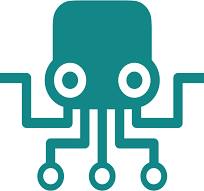Agentic AI Comparison:
Auto-GPT vs AutoGen
Introduction
This comparison report provides a detailed analysis of two leading AI agent frameworks—Auto-GPT and AutoGen—across five key metrics: autonomy, ease of use, flexibility, cost, and popularity. Both platforms aim to empower developers and organizations to build powerful, intelligent agent workflows but differ significantly in their core design and target use cases.
Overview
AutoGen
AutoGen, developed by Microsoft, excels as a customizable framework for orchestrating multi-agent workflows and maximizing Large Language Model (LLM) performance. It supports robust, dynamic agent interactions, integrates a range of tools and human feedback, and provides extensive debugging and logging capabilities. AutoGen is highly flexible and customizable, though its complexity presents a steep learning curve for new users.
Auto-GPT
Auto-GPT is an open-source platform developed by Significant Gravitas Ltd. that focuses on the creation of fully autonomous agents. Leveraging OpenAI’s GPT models, Auto-GPT agents are capable of breaking down complex problems, self-prompting, and independently utilizing internet resources to achieve predefined goals. Its strengths lie in its capacity for task automation and short-term memory management, but it faces challenges with high operational costs, hallucinations, and limited performance on extended tasks due to lack of long-term memory.
Metrics Comparison
autonomy
Auto-GPT: 9
Auto-GPT is specifically designed to build fully autonomous agents that can self-prompt, break down tasks, and operate independently with minimal human intervention.
AutoGen: 7
AutoGen supports autonomous and semi-autonomous (human-in-the-loop) operations, but its primary strength is in enabling complex, multi-agent collaboration rather than pure autonomy.
Auto-GPT offers superior full autonomy, whereas AutoGen balances autonomy with multi-agent and human-in-the-loop capabilities.
ease of use
Auto-GPT: 7
Auto-GPT provides visual design tools for easier agent construction, making it approachable for developers familiar with its ecosystem. However, managing intricate workflows and debugging recursion can be challenging.
AutoGen: 6
AutoGen's rich feature set and flexibility make it powerful but lead to a steep learning curve and added complexity, especially for beginners.
Both platforms require technical expertise, but Auto-GPT’s visual tools offer a slight advantage for new users, while AutoGen may overwhelm with its complexity.
flexibility
Auto-GPT: 7
Auto-GPT is highly flexible in automating various workflows and supporting diverse tasks but is primarily optimized for single-agent, fully autonomous scenarios.
AutoGen: 9
AutoGen stands out for its ability to orchestrate highly customizable, multi-agent applications with integrated tool use and human feedback, suitable for a wide range of complex domains.
AutoGen surpasses Auto-GPT in flexibility by enabling more diverse, large-scale, and customizable agent workflows.
cost
Auto-GPT: 5
Operational costs for Auto-GPT can be significant due to its recursive task execution and frequent use of large language models, which can quickly accumulate expenses.
AutoGen: 7
AutoGen is usually more cost-efficient, as its multi-agent orchestration and debugging features allow for optimized LLM usage, though costs can still rise with scale and complexity.
AutoGen tends to be more cost-effective for complex workloads, whereas Auto-GPT may incur higher costs for extended autonomous operations.
popularity
Auto-GPT: 8
Auto-GPT has attracted significant attention in the AI developer community and beyond due to its pioneering autonomous agent capabilities and open-source nature, fostering a robust ecosystem.
AutoGen: 8
AutoGen is also well-regarded, particularly among organizations needing enterprise-scale and customizable agent solutions, and benefits from Microsoft’s backing and an active user community.
Both platforms are highly popular and have active communities, albeit with somewhat different user bases and application domains.
Conclusions
Auto-GPT excels at building fully autonomous agents for complex tasks, offering ease of use through visual tools and significant popularity in the open-source community. However, it can be costly to operate at scale and is less flexible for multi-agent or human-in-the-loop scenarios. AutoGen, while more complex and demanding for new users, provides unparalleled flexibility, cost-efficiency, and supports advanced multi-agent orchestration, making it preferable for large-scale, enterprise, or collaborative AI workflows. The best choice depends on the user's use case: select Auto-GPT for simpler, fully autonomous projects, and AutoGen for sophisticated, multi-agent environments with customization and optimization needs.

